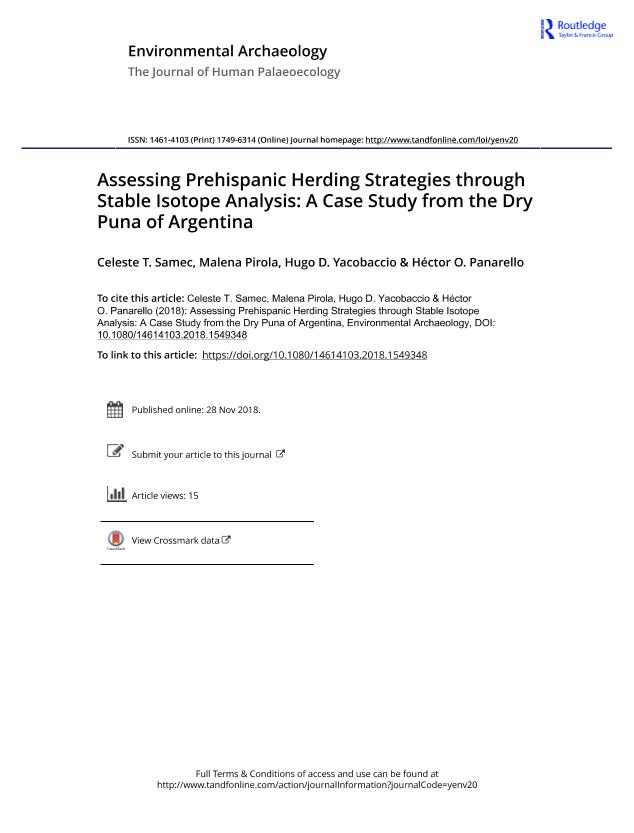Artículo
Assessing Prehispanic Herding Strategies through Stable Isotope Analysis: A Case Study from the Dry Puna of Argentina
Fecha de publicación:
11/2018
Editorial:
Taylor & Francis
Revista:
Environmental Archaeology
ISSN:
1461-4103
e-ISSN:
1749-6314
Idioma:
Inglés
Tipo de recurso:
Artículo publicado
Clasificación temática:
Resumen
The main goal of this work is to study the camelid herding and management strategies employed by the human groups that occupied the Dry Puna of Argentina during the late Holocene. Carbon and nitrogen stable isotope compositions were measured on bone collagen from domesticated South American camelids (llamas: Lama glama) recovered at two archaeological sites (Huirunpure and Chayal Cave). These results were interpreted using an already published data set of δ13C and δ15N values measured on bone collagen from modern herds of llamas managed in a traditional way. Our results showed that even though the archaeological sites of Huirunpure and Chayal Cave are located within different settings–at 4020 and 3700 masl respectively – and present different chronologies–0–650 and 1300–1500 CE respectively – the llamas from both sites exhibit similar δ13C and δ15N values. This pattern was explained considering the characteristics of the vegetation communities that grow in the vicinity of both sites as well as the paleoenvironmental records of the Andean highlands. In sum, this work presents and discusses some preliminary results on the study of prehispanic herding practices in the Dry Puna of Argentina during the first 1500 years of the Common Era through stable isotope analysis.
Archivos asociados
Licencia
Identificadores
Colecciones
Articulos(INGEIS)
Articulos de INST.DE GEOCRONOLOGIA Y GEOLOGIA ISOTOPICA (I)
Articulos de INST.DE GEOCRONOLOGIA Y GEOLOGIA ISOTOPICA (I)
Citación
Samec, Celeste Tamara; Pirola, Malena; Yacobaccio, Hugo Daniel; Panarello, Hector Osvaldo; Assessing Prehispanic Herding Strategies through Stable Isotope Analysis: A Case Study from the Dry Puna of Argentina; Taylor & Francis; Environmental Archaeology; 11-2018; 1-12
Compartir
Altmétricas




